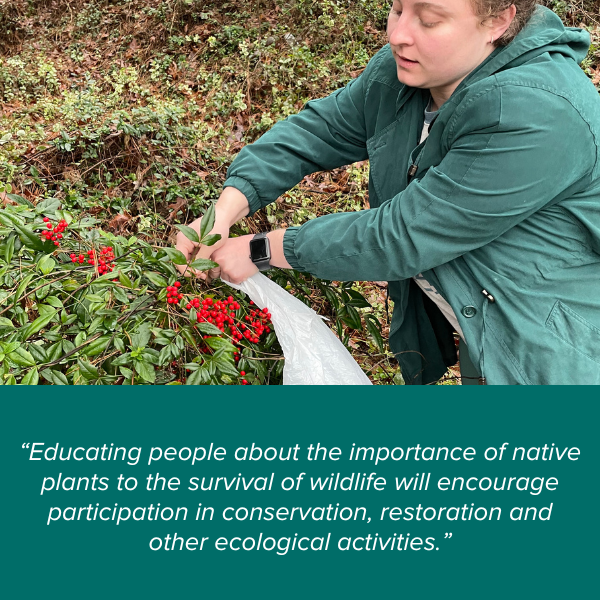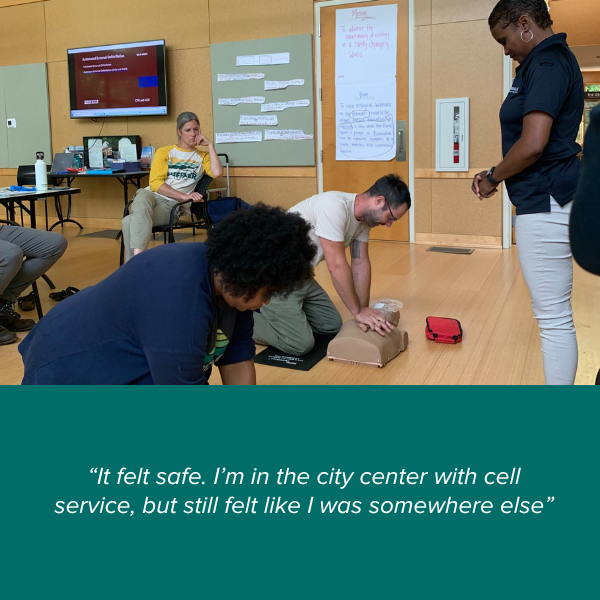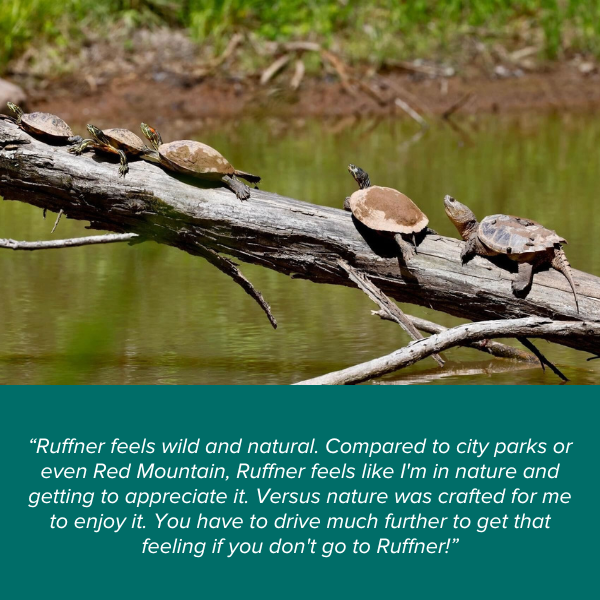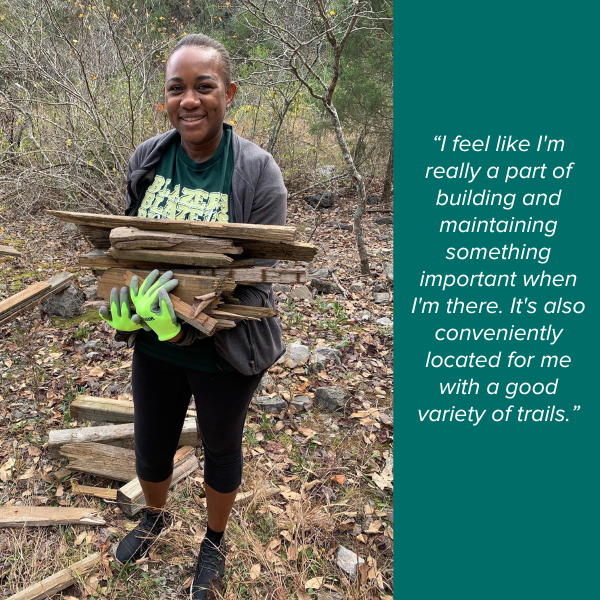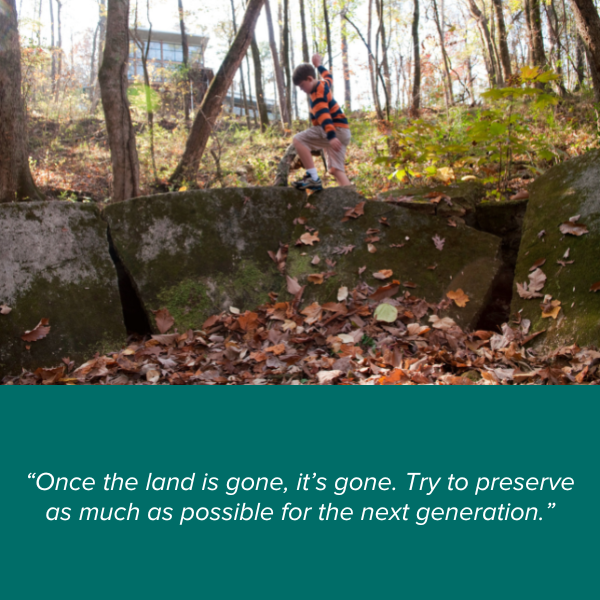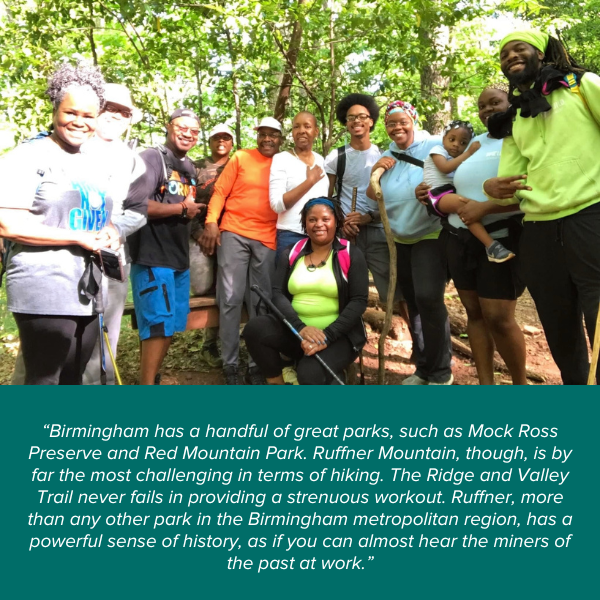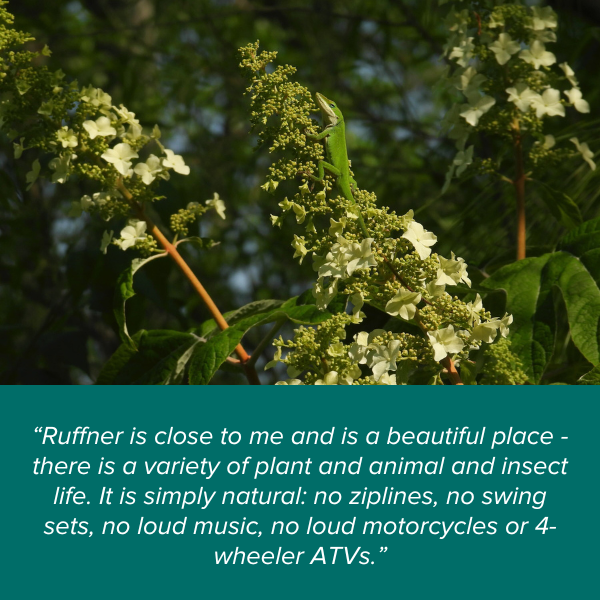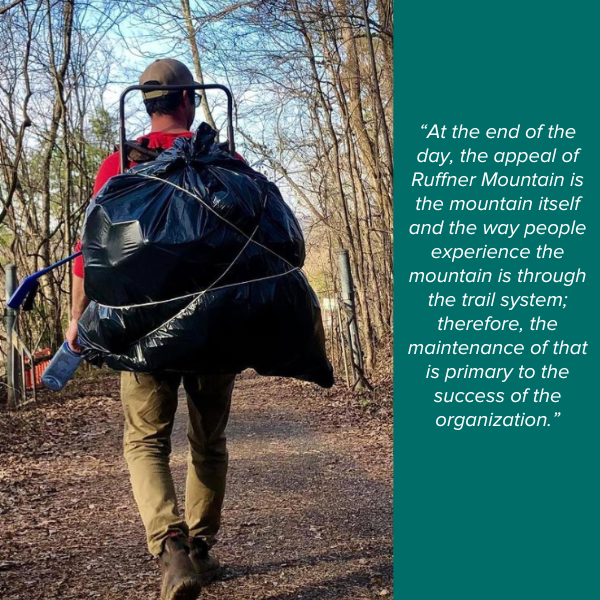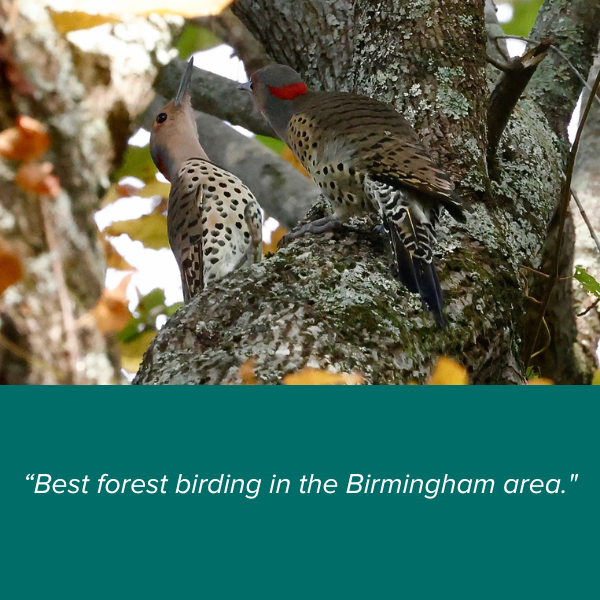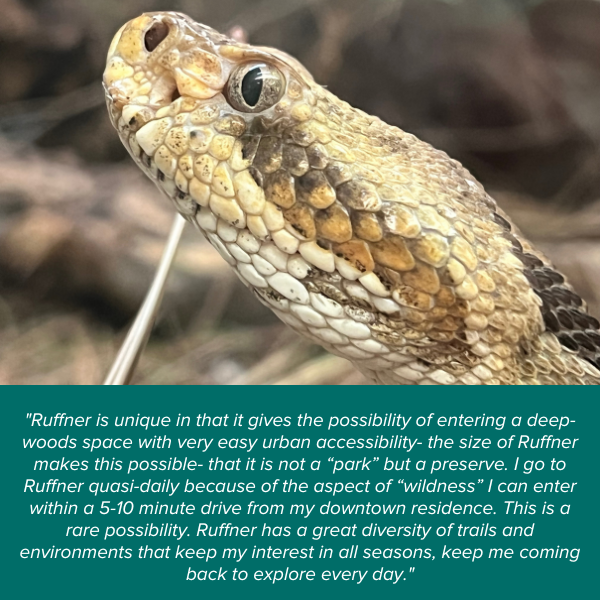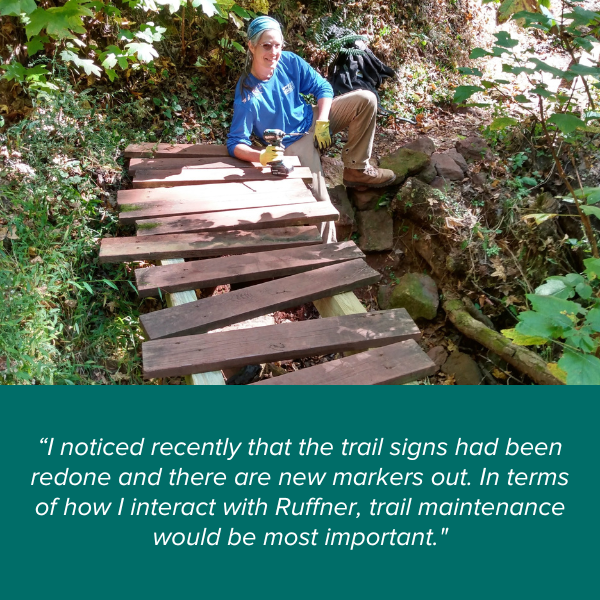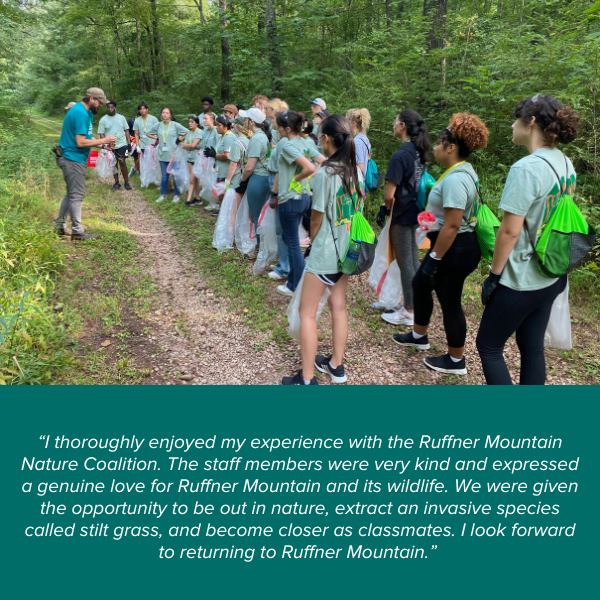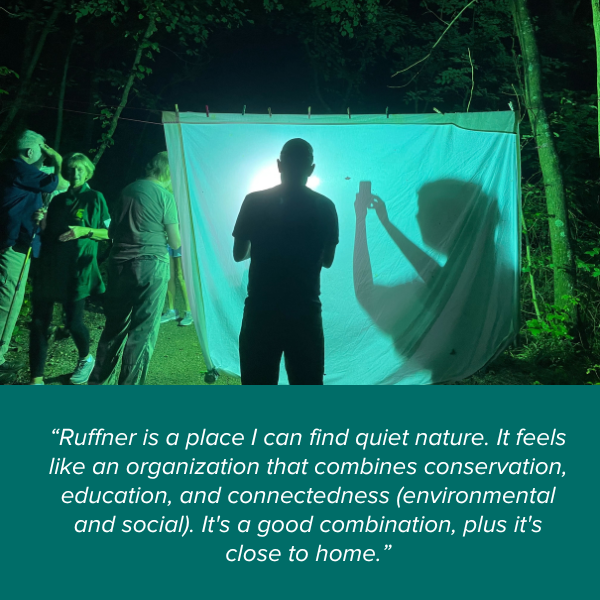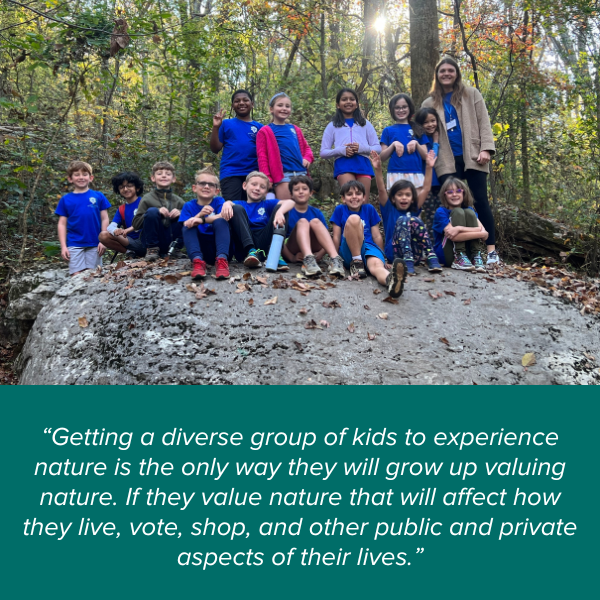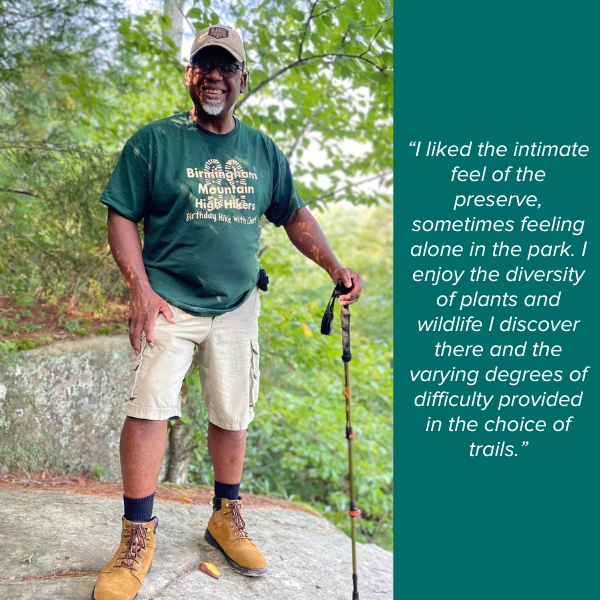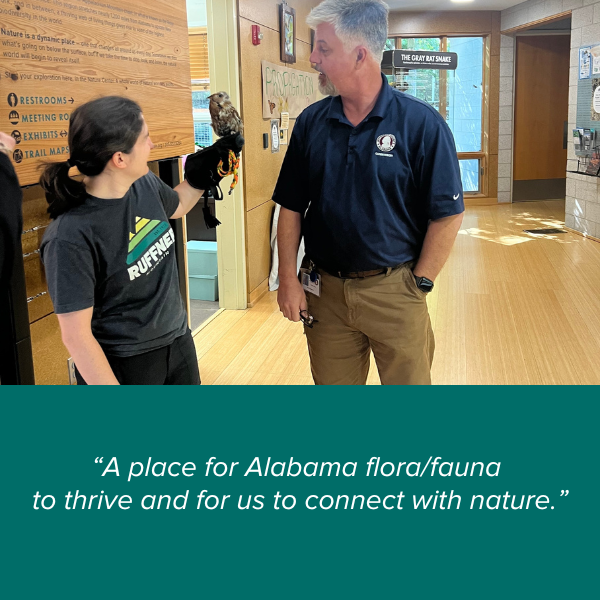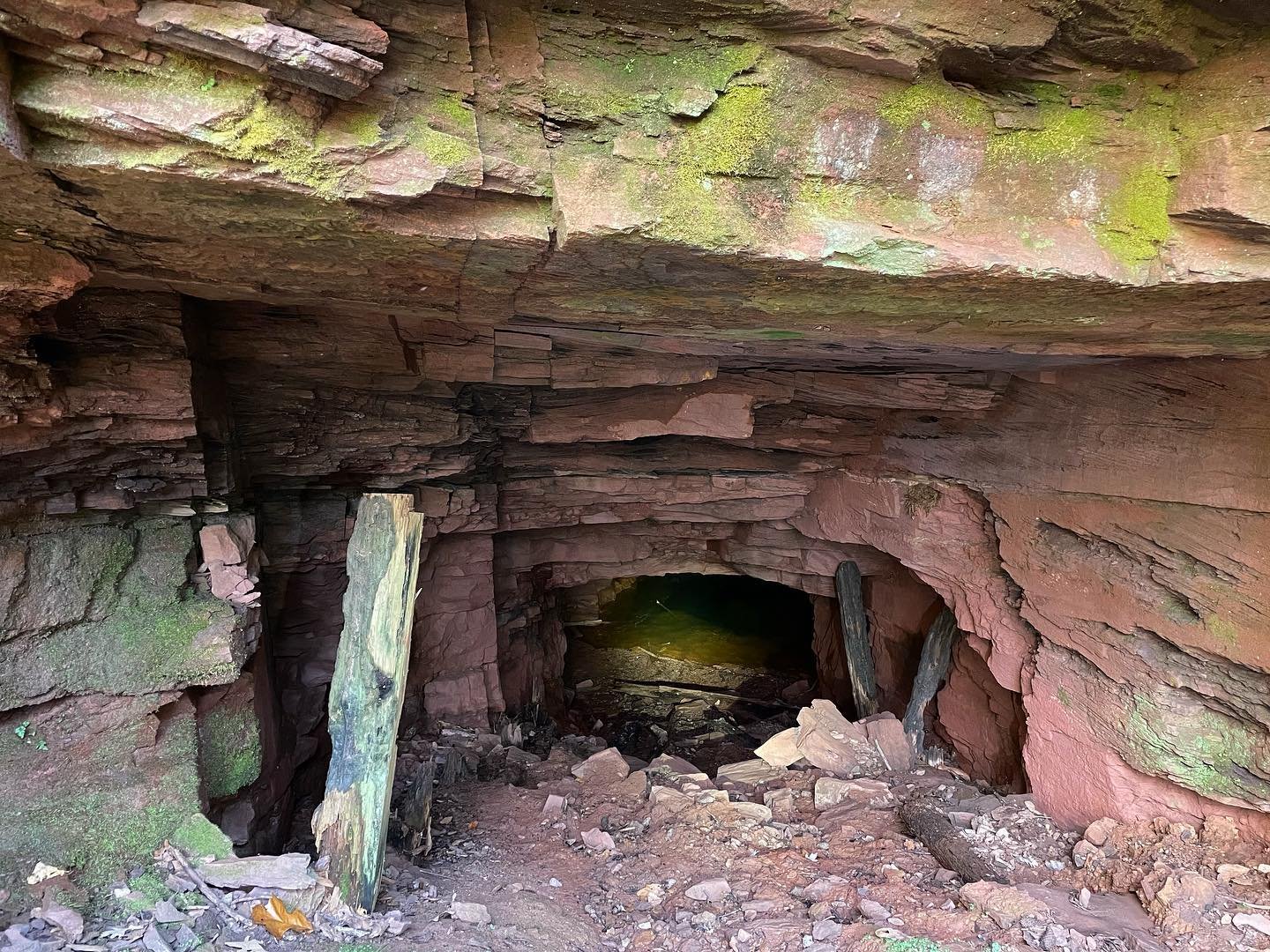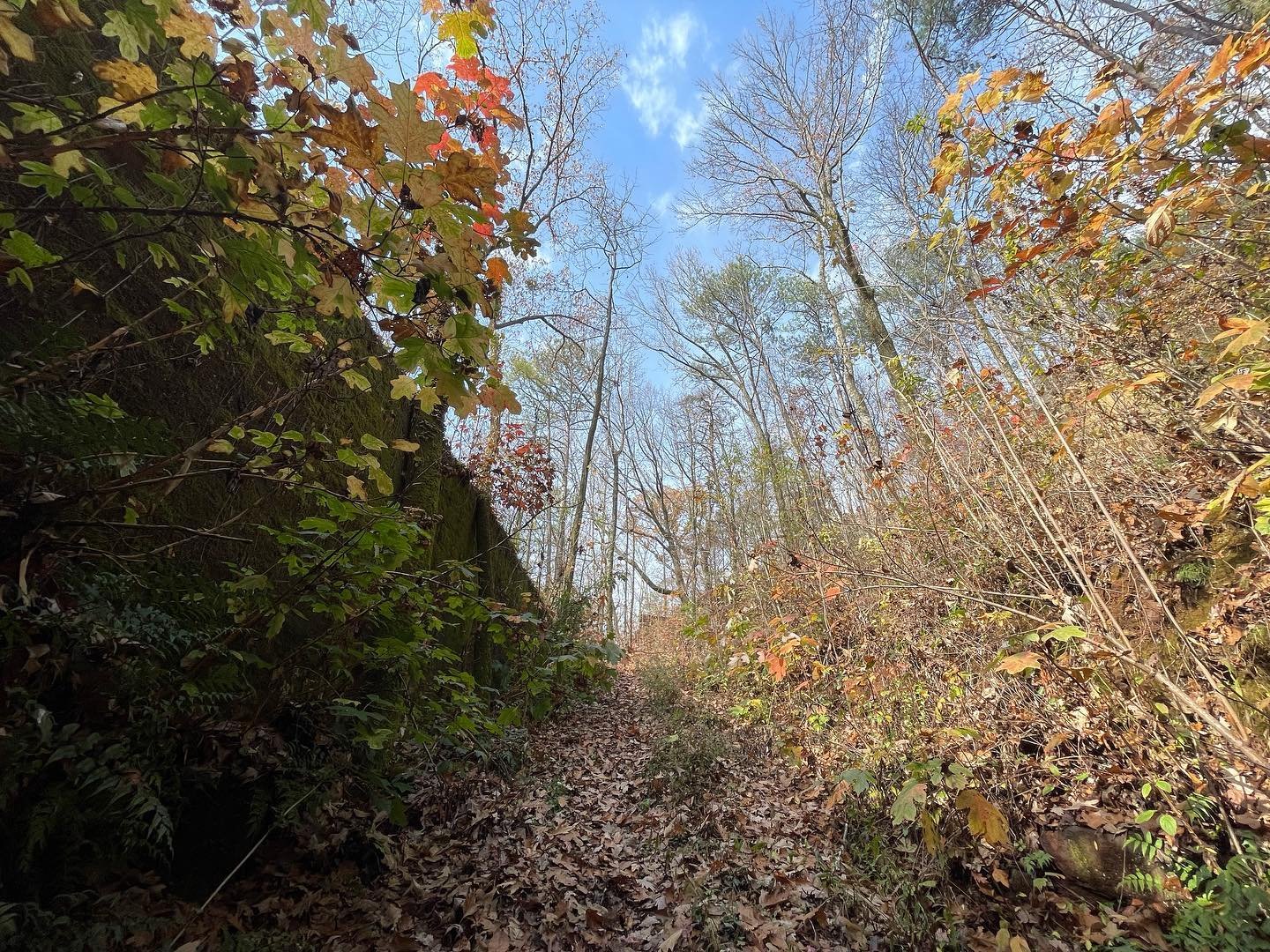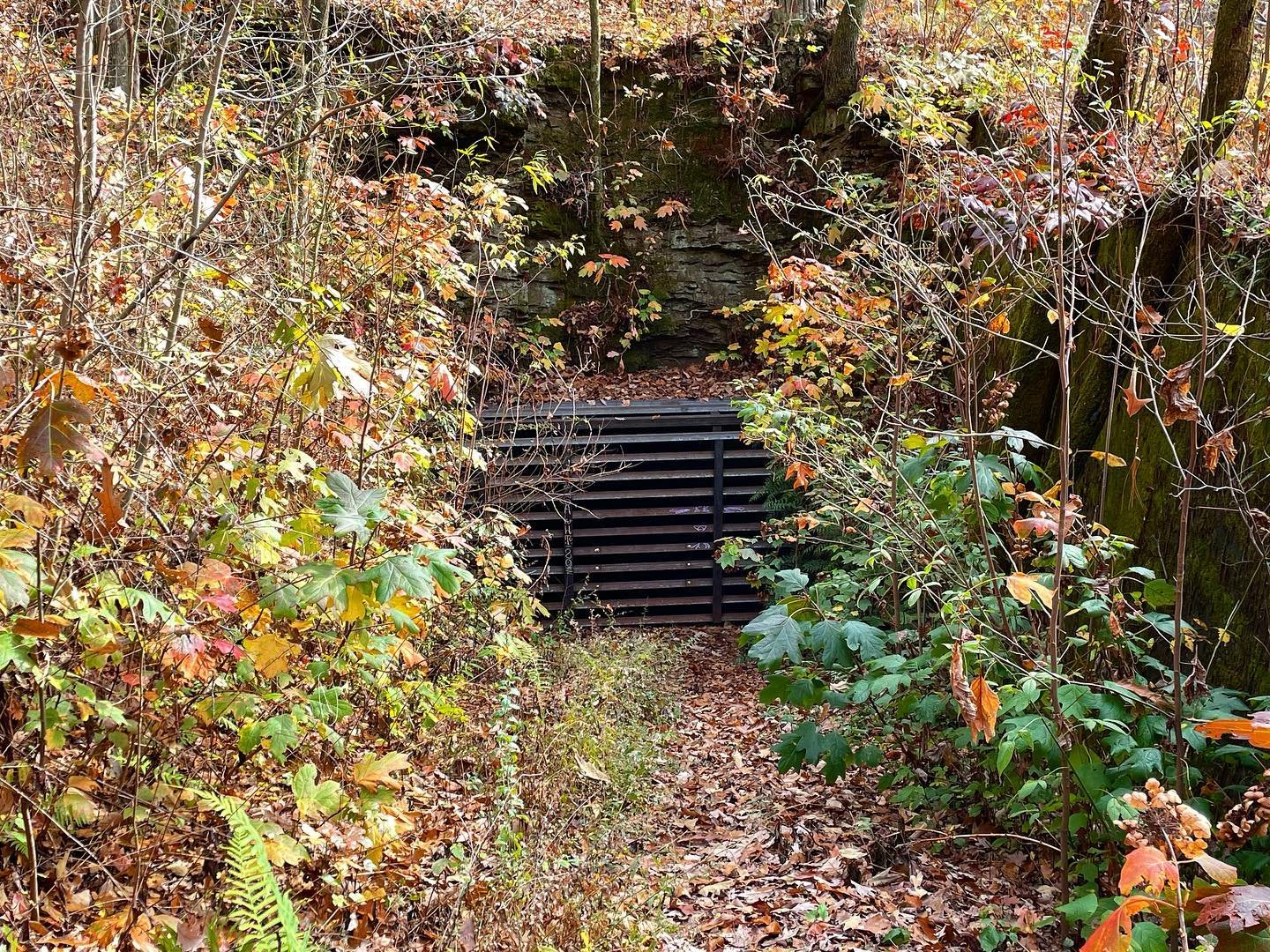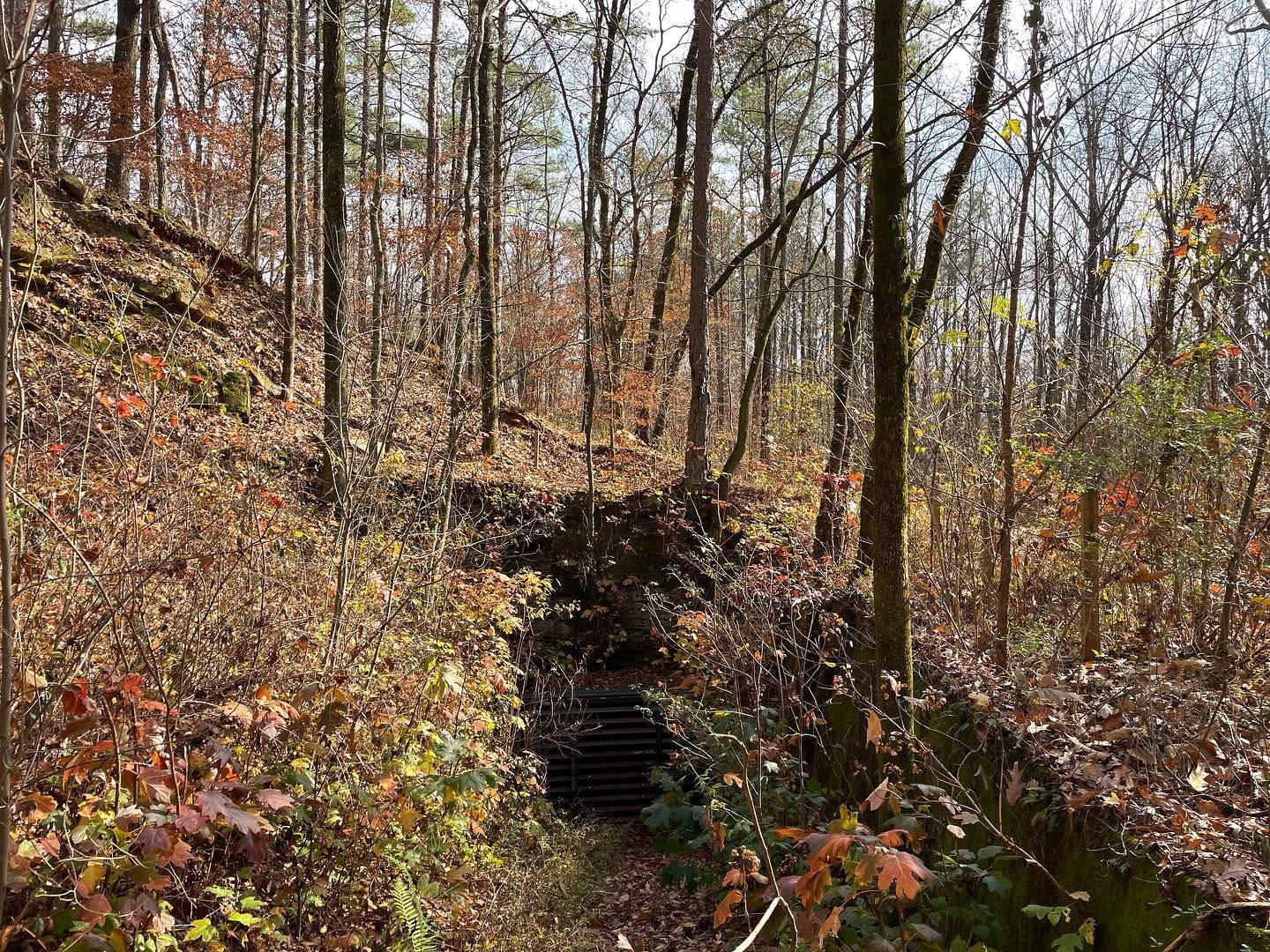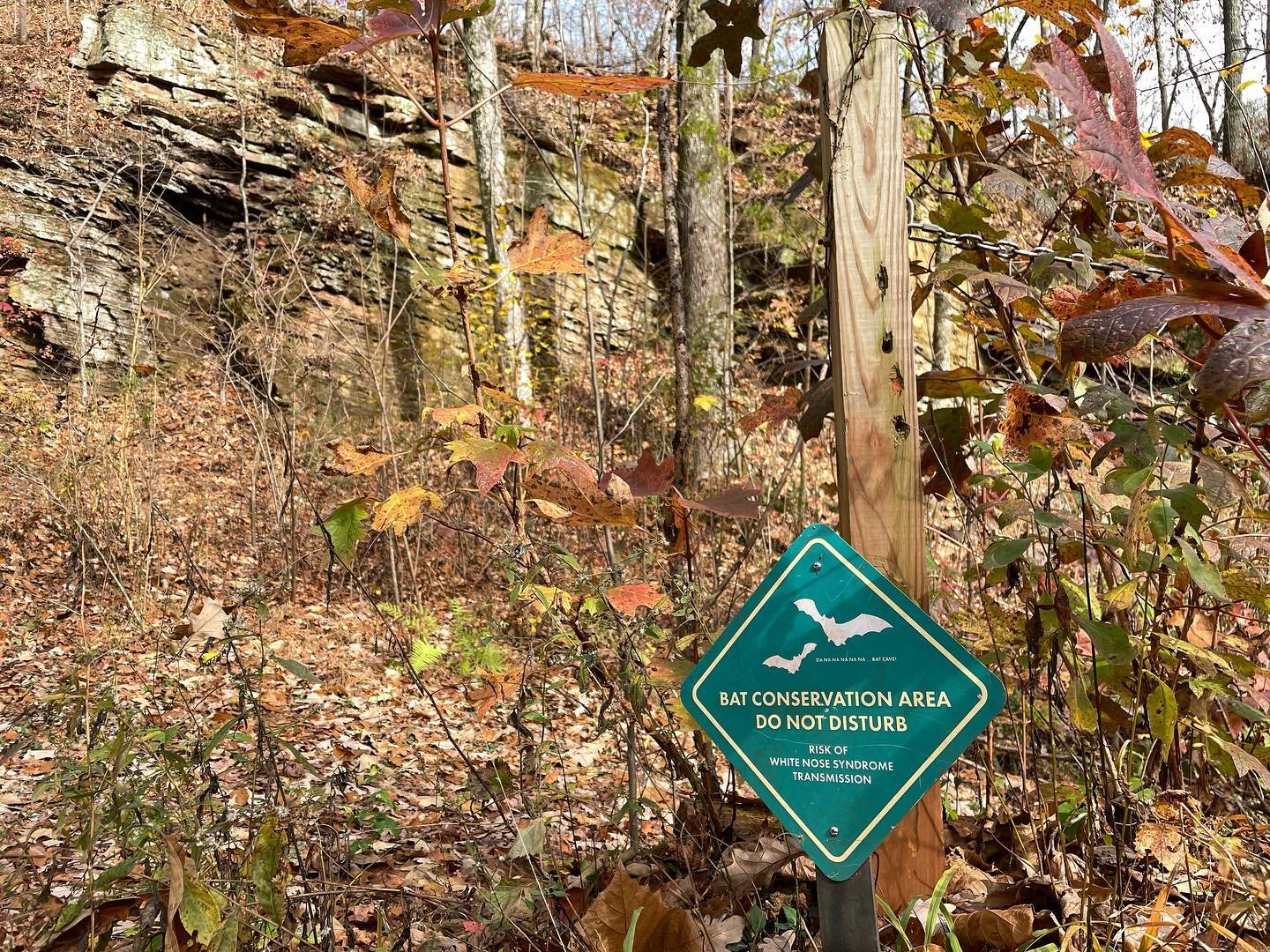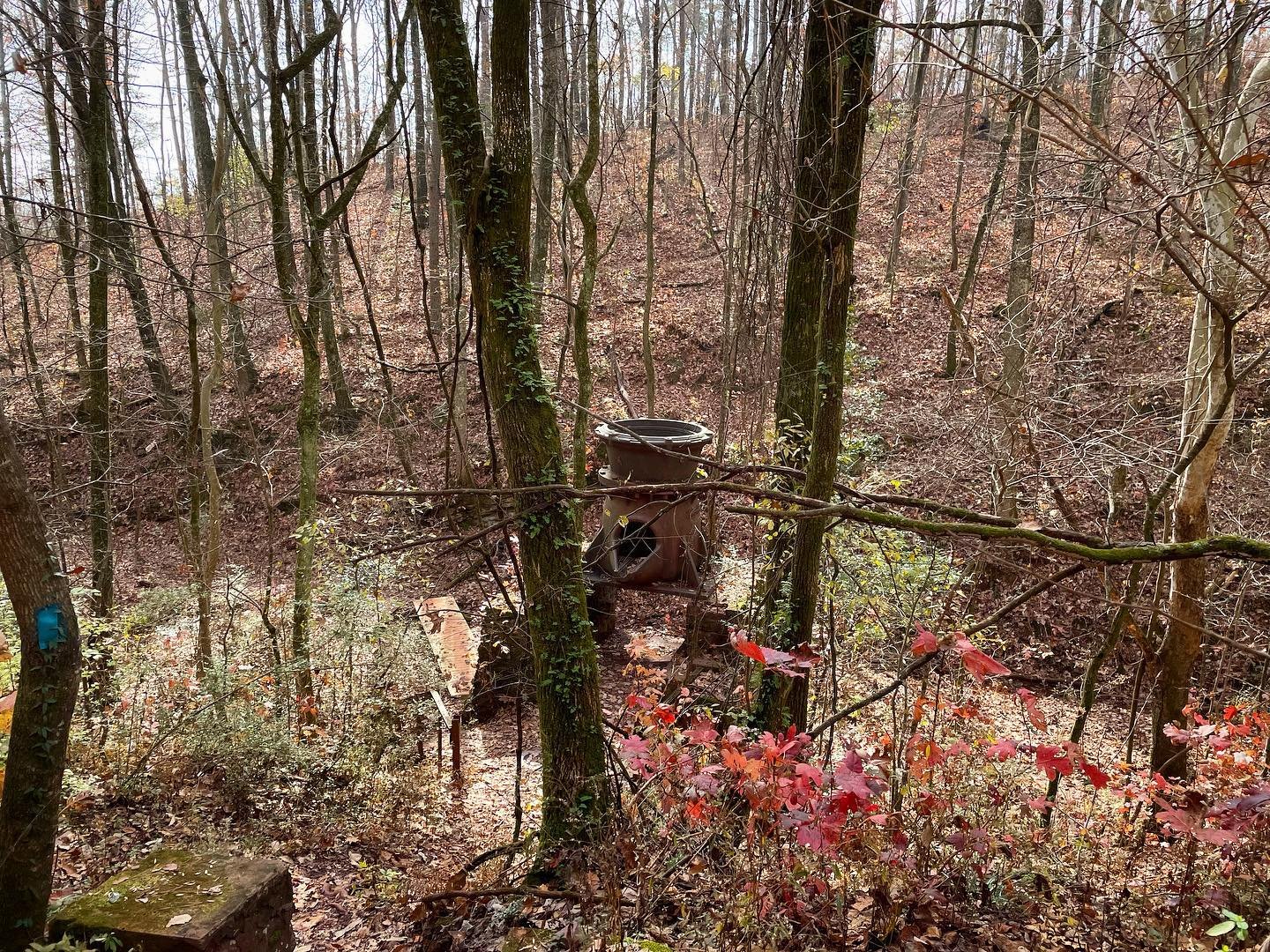On a Ruffner hike, you’ll see plenty of clues to the mountain’s industrial past. Quarries, iron ore mine openings, test pits, rock crushers, rail beds, and foundations to hoists and conveyors — industrial scars — scrapes and slopes, pits and chasms, valleys and ridges, quarries and crags — this human-altered landscape has become important habitat for wildlife and a refuge from the escalating spread of modern urbanization. Ruffner’s mines serve as good habitat for roosting and hibernating bats. Safeguarding the openings with gates allows access to bats, keeps visitors from entering danger zones (please do not attempt entry into any mines), and allows researchers to monitor the populations for the presence or absence of Pseudogymnoascus destructans (Pd), the fungus that causes white-nose syndrome, a deadly disease which has devastated populations of several species of bats in North America.
Our first bat survey of the winter season at mine No. 3 went well, finding 339 tricolored bats (Perimyotis subflavus) and two big brown bats (Eptesicus fuscus). Although swab samples collected may find the presence of Pd, the surveyers saw no obvious signs of the disease, providing some hope that the bats may be able to either cope with the disease or that researchers may unlock some potential for treatment. Data was collected from 21 tricolored bats and roosting surfaces and will be sent to a Virginia Tech lab where researchers will test the results. Another survey will be conducted in February, near the end of hibernation. With each new survey we learn more about this species using the Ruffner mines for hibernation.
Thanks to Nick Sharp, Biologist - Alabama Department of Conservation and Natural Resources (ADCNR), Pete Pattavina, Biologist - US Fish and Wildlife Service (USFWS), and Jamie Nobles, Conservation Director - Ruffner Mountain Nature Coalition. Outdoor Alabama U.S. Fish and Wildlife Service
